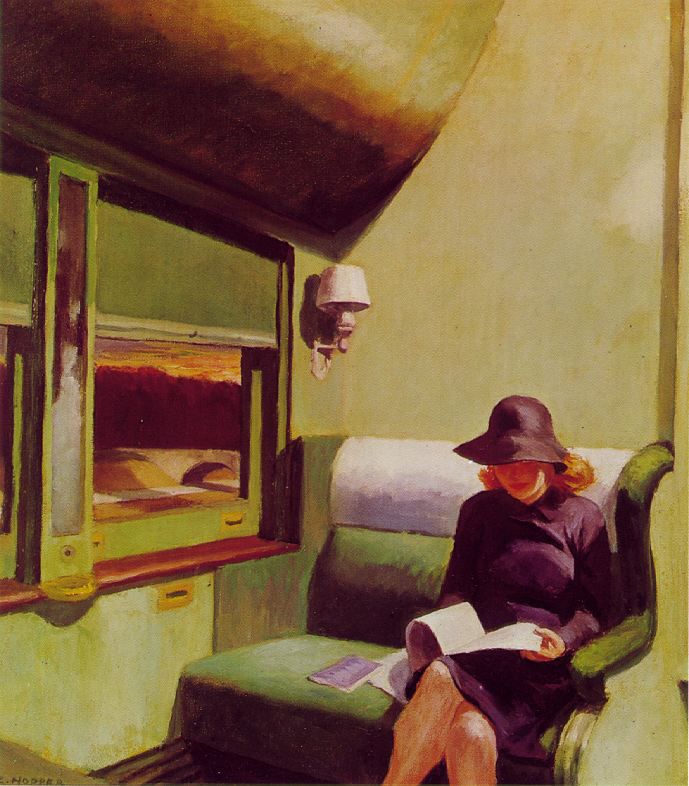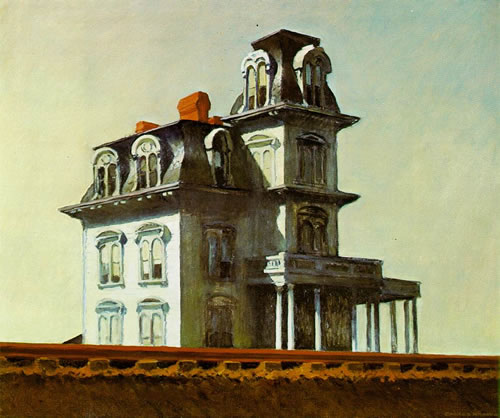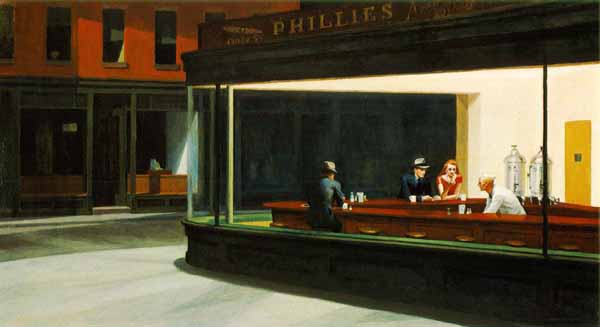-


 Edward Hopper
Edward Hopper
American
Artist
Painting did not come easily to Edward Hopper. Each canvas represented a long, morose gestation spent in solitary thought.
Edward Hopper, the best-known American realist of the inter-war period, once said: 'The man's the work. Something doesn't come out of nothing.' This offers a clue to interpreting the work of an artist who was not only intensely private, but who made solitude and introspection important themes in his painting. While most popularly known for his oil paintings, Edward Hopper was equally proficient as a watercolorist and printmaker in etching. In both his urban and rural scenes, his spare and finely calculated renderings reflected his personal vision of modern American life.
Edward Hopper was born in upper Nyack, New York, a yacht-building center north of New York City, the only son of a comfortably well-off, middle-class family. His parents, mostly of Dutch ancestry, were Garret Henry Hopper, a dry-goods merchant, and his wife Elizabeth Griffiths Smith. Hopper was a good student in grade school and showed talent in drawing at age five. Edward Hopper readily absorbed his father’s intellectual tendencies and love of French and Russian culture and demonstrated his mother’s artistic lineage. In 1895, Edward Hopper created his first signed oil painting, Rowboat in Rocky Cove, which demonstrated his early interest in nautical subjects. In his early self-portraits, Hopper tended to represent himself as skinny, ungraceful, and homely.
Though a tall and quiet teenager, his prankish sense of humor found outlet in his art, sometimes in depictions of immigrants or of women dominating men in comic situations. By 1899 Edward Hopper had already decided to become an artist, but his parents persuaded him to begin by studying commercial illustration because this seemed to offer a more secure future. Edward Hopper first attended the New York School of Illustrating, then in 1900 transferred to the New York School of Art. It was here that Hopper studied with legendary teachers William Merritt Chase, Robert Henri, and Kenneth Hayes Miller.
Edward Hopper would describe Robert Henri as 'the most influential teacher I had', adding 'men didn't get much from Chase; there were mostly women in the class.' Early on, Hopper modeled his style after Chase and French masters Édouard Manet and Edgar Degas. Sketching from live models proved a challenge and a shock for the conservatively raised Hopper. Edward Hopper was a slow developer in art, remaining at the School of Art for seven years, eventually became a part time teacher there. Like the majority of the young American artists of the time, Edward Hopper longed to study in France. With his parents' help he finally left for Paris in October 1906. This was an exciting moment in the history of the Modern movement, but Hopper was to claim that its effect on him was minimal.
In 1913 Edward Hopper moved to Greenwich Village, renting the top floor apartment at 3 Washington Square North. This would be his home for the rest of his life. Until the age of 40, Edward Hopper’s career was marked by disappointment. Edward Hopper only sold one painting and was rarely able to get into gallery shows. Hopper supported himself through commercial illustration, which he loathed. Edward Hopper also had great success with printmaking, which won him critical recognition. Hopper’s breakthrough came in 1923 when the Brooklyn Museum bought his watercolor The Mansard Roof for $100. The following year Edward Hopper married fellow painter Josephine Nivison and began showing his work with prominent New York art dealer Frank Rehn. Solo shows made Hopper’s reputation: his oils and watercolors sold well, and critics applauded his quiet realism, use of light, and above all, his ability to reveal beauty in the most mundane subjects.
Though Edward Hopper's compositions are supposedly realist they also make frequent use of covert symbolism. Hopper's paintings have, in this respect, been rather aptly compared to the realist plays of Ibsen, a writer whom he admired. "One of the themes of The House by the Railroad is the loneliness of travel, and the Hoppers now began to travel widely within the United States, as well as going on trips to Mexico. Although Hopper continued to travel, his best-known works came from his solitary wanderings in New York City. These include Early Sunday Morning, which shows Greenwich Village shop fronts before people filled the streets, and Nighthawks (Shown top of page), an image of a diner late at night.
Edward Hopper died at the age 84, and during his long career saw the rise of many different avant-garde moments, including Surrealism, Abstract Expressionism, and Pop Art. Despite the popularity of these styles, Edward Hopper remained esteemed by critics and the public.